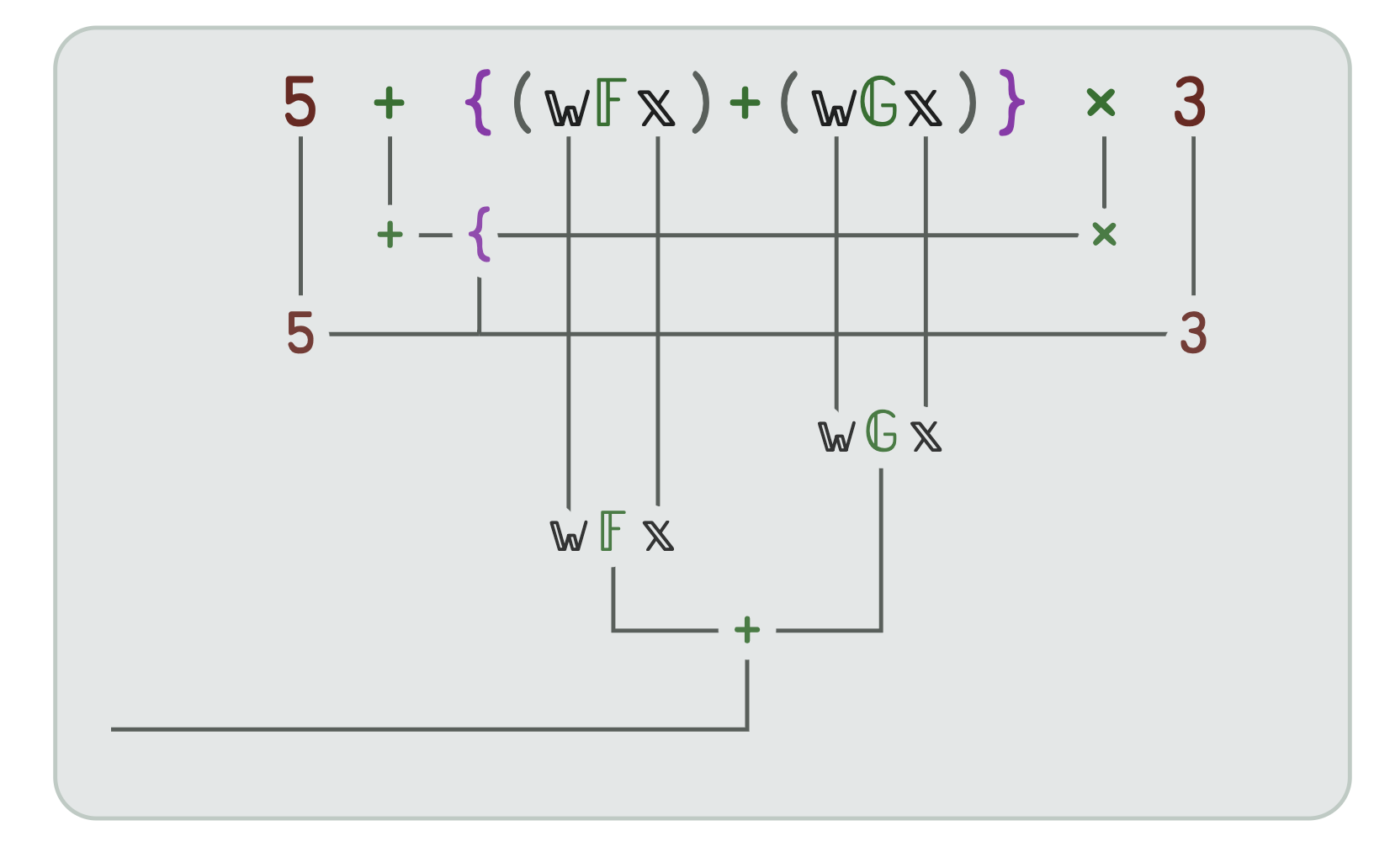BQN & Julia
BQN and Julia battle to the death!
These views do not in any way represent those of NVIDIA or any other organization or institution that I am professionally associated with. These views are entirely my own.Why?
Raz (@miguelraz_ on Twitter) suggested we work through some problems in BQN and Julia, each in the language we know less about, guiding each other through the problems.
BQN
In our first call, Raz and I went through a couple BQN primitives to get him started with the language. These are my notes from getting him set up:
3‿3⥊↕10 # set up a matrix
┌─
╵ 0 1 2
3 4 5
6 7 8
┘
⌽3‿3⥊↕10 # reverse it
┌─
╵ 6 7 8
3 4 5
0 1 2
┘
# transpose it and marvel at the
# relationship between the ⌽ and ⍉ glyphs
⍉3‿3⥊↕10
┌─
╵ 0 3 6
1 4 7
2 5 8
┘
When looking at the keyboard in the JS repl, it’s helpful to note that:
- Functions are in green
- 1 Mod are in purple/pink
- 2 Mod are in yellow
Try to get a good feel for ¨, ⌜, and ´ as these are oft-used modifiers.
Note also that the following glyphs are special: 𝕤𝕩𝕨𝕣𝕗𝕘.
These have special meaning inside function and modifier blocks.
For example:
_Hi_←{(𝕨𝔽𝕩)+(𝕨𝔾𝕩)}
(2-modifier block)
5 + _Hi_ × 3
23
Within the _Hi_ block:
𝕤←{(𝕨+𝕩)+(𝕨×𝕩)}
𝕨←5
𝕩←3
𝕣←{(𝕨𝔽𝕩)+(𝕨𝔾𝕩)}
𝔽←+
𝔾←×

Warming up with BQN, Julia, and C++
Leetcode problem: Maximum Gap.
As C++ is my primary language, that’s where I started with this problem.
This was my first pass to see if I understood the problem well enough:
int maximum_gap(vector<int>& nums) {
if (nums.size() < 2)
return 0;
std::sort(nums.begin(), nums.end());
int m=0;
for (int i=1; i < nums.size(); i++) {
m = std::max(m, std::abs(nums[i]-nums[i-1]));
}
return m;
}
This cleaned up version that uses Range V3 (godbolt link), however it may not use linear time and linear extra space. If you want to be a stickler about the time and space requirements, you can refer to Raz’s final Julia solution or my previous C++ solution.
int solve(auto& v) {
if (v.size() < 2) return 0;
sort(v);
return max(views::transform(v, v | views::drop(1),
[] (auto a, auto b) {
return std::abs(a-b);
}));
}
This uses a suggestion in an issue in the Range V3 github. I would rather have an adjacent difference view I could pipe to.
I then moved on to BQN:
i←⟨
3‿6‿9‿1 # Real test case, answer is 3
1 # Len 1, ans 0
@ # Len 0, ans 0
⟩
F1←(2>≠)◶{⊑∨|-˝⍉2↕∧𝕩}‿0
F3←(2>≠)◶(⊑∘∨(|-˝∘⍉∘(2⊸↕∘∧)))‿0 # Tacit version
F1¨i
⟨ 3 0 0 ⟩
F2¨i
⟨ 3 0 0 ⟩
My first Julia solution felt very inelegant - I would have written almost the same code verbatim if I were writing Fortran, which Julia is hoping to replace in many instances. I look forward to seeing what other solutions the Julia experts could show me.
I don’t think this solution uses linear time either.
function solve(nums)
if length(nums) < 2
return 0
end
nums = sort(nums)
m = -1
n = nothing
for i in nums
if n == nothing
n = i
continue
end
m = max(m, abs(n-i))
n = i
end
return m
end
Raz’s solution:
function sol(arr)
# Bail early if too short
length(arr) < 2 && return 0
# take the maximum of the diff
mini = minimum(arr)
# Use in-place RadixSort to modify `arr`
sort!(arr, alg = RadixSort)
# Take the max of the diff
maximum(diff(arr))
end
